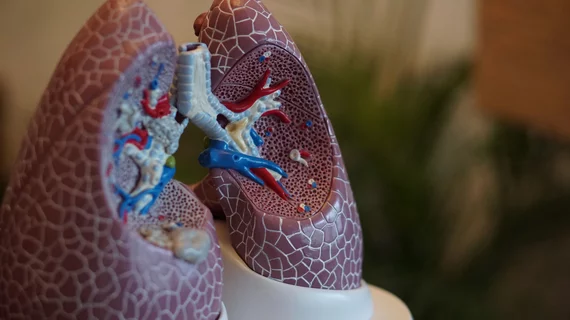ACR demands action after high-profile trial tallies 25% lung cancer death rate dip
The American College of Radiology is calling for immediate action from the federal government, following the release of illuminating new study results related to low-dose CT screening.
Dutch-Belgian researchers this week unveiled findings from the long-running NELSON trial, which has tracked the impact of such imaging check-ins on lung cancer rates. With nearly 16,000 high-risk individuals followed over a decade, the team reported a 24% lower risk of death from lung cancer among men who received screenings. Results were even more promising among women, with a 33% reduction, according to results published Wednesday in the New England Journal of Medicine.
ACR—a longtime proponent of low-dose CT for lung cancer screening—estimated that upward of 60,000 lives could be saved annually in the U.S. if this practice became widespread. However, “drastically low” Medicare rates remain a barrier to saving lives, the college asserted this week.
“Lung cancer kills more people each year than breast, colon and prostate cancers combined. If implemented nationwide, this cost-effective test would save more lives than any cancer screening test in history,” Debra Dyer, MD, chair of the ACR Lung Cancer Screening 2.0 Committee, said in a statement. “Medicare must provide adequate reimbursement for these exams.”
In a letter to the head of Health and Human Services Thursday, ACR CEO William Thorwarth Jr., MD, also urged the agency to leverage its anti-smoking campaigns to encourage more CT screenings. He noted that public awareness of such imaging’s powerful impact is “woefully low,” with some estimates indicating that as few as 4% of eligible patients take advantage.
For the NELSON study (an acronym for Nederlands–Leuvens Longkanker Screenings Onderzoek), European researchers enrolled 15,792 individuals ages 50-74, who were current or former smokers. They then assigned a random portion to receive low-dose CT screenings at one, three and five and a half years. Lead author, Harry de Koning, MD, PhD, and colleagues also noted that CT helped increase the likelihood of detecting lung cancer in earlier stages when compared to the control group. Adherence was also high, with nearly 88% of male participants undergoing three screenings.
In a corresponding NEJM editorial, experts said any doubts about the benefit of low-dose CT “should be laid to rest” after these recent findings. The results also confirm that two-year intervals between screenings are “safe and effective,” added Stephen Duffy, with the London-based Wolfson Institute of Preventive Medicine, and colleagues.
One of the common criticisms of low-dose CT screening is the risk of false positives and increased patient anxiety. However, ACR cited updates to Lung-RADS—a quality assurance tool used to standardize CT reporting and management—as key to addressing this concern. One analysis found this tool helped reduce false positive rates by 75%, the college noted.
With much of the doubts about this screening practice cleared, the main remaining question is how to pay for it. ACR noted that Medicare reimburses as little as $60 per exam for low-dose CT screening in the hospital outpatient setting, less than half of what it pays for a mammogram. Inadequate reimbursement is stifling program growth and limiting patients’ access to the tests, the college argued.
“Our job is no longer to assess whether low-dose CT screening for lung cancer works: it does,” Duffy and colleagues wrote in their editorial. “Our job is to identify the target population in which it will be acceptable and cost-effective.”

